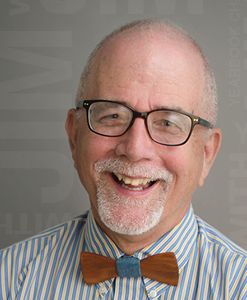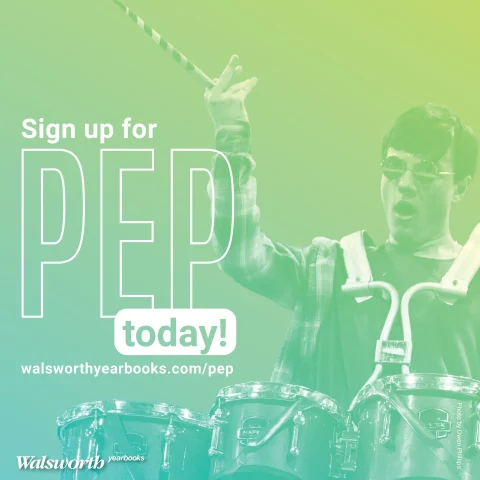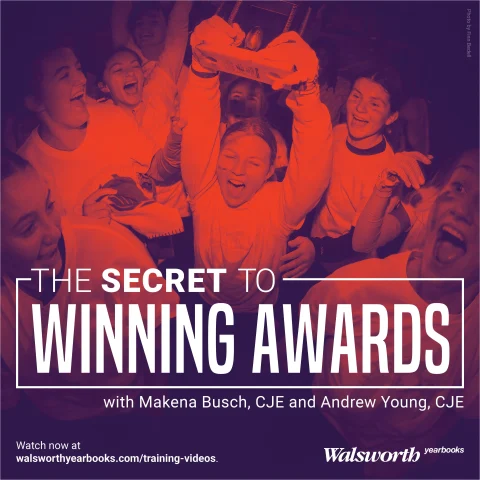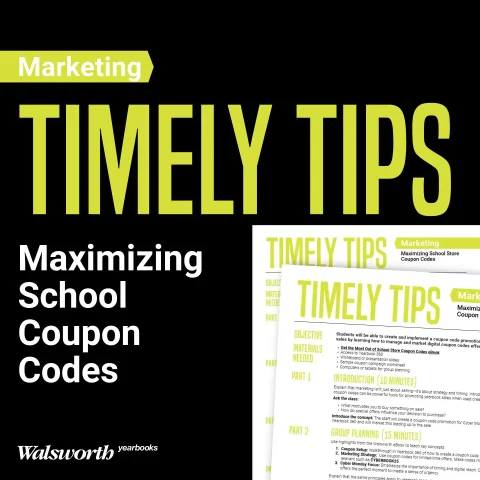Updated by Delaney Pierce 5/12/2025
Across the country, students make their way to their school for learning. But the students at your school will have a different experience than the students at all those other schools. Your yearbook needs a theme that reflects what happened in that particular year.
A theme is an idea or concept threaded throughout a yearbook to unify its parts. A theme is not a cliché or cute phrase, but sounds like something students would say this year, and looks like this year’s colors and design trends.
Some years an obvious theme will surface, if changes have occurred at your school. Some years, coming up with a theme is difficult. But whatever theme you select, you need to explain it to your readers in your theme copy.
What is theme copy?
- Theme copy appears on the first two spreads following the title page and as a part of the closing. The divider pages will also be an extension of the theme/concept development.
- The copy should tell in specific terms what the theme is all about, and how it relates to the school, the students and the year.
- It could be a first-person narrative (I or we), a dialogue, a third-person account of relevant details or any other style that communicates clearly the theme and personality of the book.
- Effective theme copy can feature one story continued from spread to spread or distinctly separate pieces of copy on each spread. Some staffs repeat theme phrases in the headlines on all these spreads; others write original headlines to suit the copy on each spread.
Now let’s take a look at some examples of great opening and closing theme copy.
Example one: The Lair, Shawnee Mission Northwest High School, Shawnee, Kansas



Opening
Here’s the thing.
“High school” was Homecoming court, varsity football games and the newest couple.
But that wasn’t everything.
Maybe you cheered when the juniors upset the seniors and won Powderpuff or watched sophomore Collier Rule perform a guitar solo in front of the student section or ate pancakes and sausage at the first Senior Sunrise.
But, you know what, sometimes high school was awful.
Maybe you didn’t get elected for Student Council freshmen year, spent Friday nights alone in your room while all your friends were together or maybe your parents didn’t financially support you while you were just a teenager.
Sometimes high school was hard.
And not in the finals-week way, but in the you’re-leaving-your-childhood-and-aren’t-ok way.
So maybe you weren’t here to go to dances, you weren’t here to join Spirit Club, you were here so you didn’t receive a truancy letter in the mail.
You were here because you had to be.
It’s ok not to have that high school dream, it’s ok to just survive the four years.
But that doesn’t mean your time here meant nothing.
Here’s the thing.
We’ve been listening, trying to find your stories.
And we’re finally ready to tell them.
So turn the page…



Closing
Here’s the thing.
This year started hard.
Before first semester even ended, you struggled with the deaths of two students and the empty seats they once filled.
Although it was tough, you still arrived early to watch the undefeated boys’ basketball team clutch the state title, woke to the fifth snow day message in nine school days from StuCo sponsor Sarah Dent and snapped along to the Addams Family Musical.
Just when you thought you had it all figured out, you were slapped with senioritis and a list of 15 missing assignments, knew you would spend the entire game on the bench and struggled to find who and what you believed in.
So you got enough assignments done to graduate or maybe get the grade you wanted, cheered for your teammates from the bench because that’s the kind of person you were.
In the end you learned to believe in yourself and maybe that’s the most important lesson.
You’ve shown you wanted to persevere, finish the semester, the year, or finally walk across the stage at graduation.
There was no one way to do high school, only your way.
And here’s the thing, you did it.
Example two: Lance, Fairview High School, Boulder, Colorado
Opening
Little Moments
It’s the little things
The overlooked
It’s the first crunch of leaves under our sneakers in fall
It’s the switch to warm drinks, It’s the budding of blooms in April
And the warm summer nights under indigo skies
It’s the annoying things
How we can never find a spot in the senior lot
How basketball games were over packed and stuffy
How we can barely walk through the cafeteria during block lunches
But it’s everything else too
It’s that pause you take when walking into school and take in the mountains
It’s the reflection in Viele Lake
It’s the smell of freshly baked cookies from the IB store
It’s snow days when our cars will barely move
It’s that lull in the crowd at a football game: a moment of soft silence when time just stops
Lost moments
We’ll regret not going to that football game, but there’s always the Boulder-Fairview game. That we’ll never miss.
We’ll mourn the Senior sunrise that lacked a sunrise. But it wasn’t our last time sitting with friends.
And we’ll think Homecoming was all it was built up to be… and maybe it was.
Or maybe it wasn’t.
We’ll forget it was our first. Our last.
So let’s remember the smiles, the laughs, the friendships, when we lost track of time.
Take your time
Closing:
These are the moments
The ones that make us
Pause
Forget
Appreciate
All the time in the world
Because we don’t have all the time in the world
We have right now.
The time has come.
Strong theme copy brings your yearbook’s concept to life, making it more than just a collection of pages. By writing with authenticity, creativity and purpose, you ensure your theme is felt from cover to cover. A great yearbook doesn’t just document the year, it tells its story.
Now it’s your turn to bring your theme to life! Use the tips and examples above to start crafting compelling theme copy. For more guidance, explore the “Finding Your Theme” and “Writing: Tell Me a Story” units in Walsworth’s Yearbook Suite curriculum.





